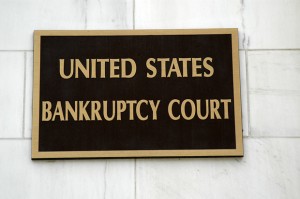 Social Security benefits come up in two different ways in bankruptcy cases. First, Social Security benefits are not considered income on the means test in both Chapter 7 and Chapter 13 cases. A means test is a way of calculating disposable income. It takes an average of the debtor’s last six months income and deducts standard IRS deductions like taxes, insurance premiums, out-of-pocket medical expenses, etc. If the debtor has money left after subtracting all of his deductions then he has disposable income.
Social Security benefits come up in two different ways in bankruptcy cases. First, Social Security benefits are not considered income on the means test in both Chapter 7 and Chapter 13 cases. A means test is a way of calculating disposable income. It takes an average of the debtor’s last six months income and deducts standard IRS deductions like taxes, insurance premiums, out-of-pocket medical expenses, etc. If the debtor has money left after subtracting all of his deductions then he has disposable income.
Too much disposable income means that the debtor may not qualify for a discharge under Chapter 7. Since Social Security income is not considered income on the means test, a Chapter 7 debtor may qualify for a discharge even though they wouldn’t qualify if the source of the income was from employment or some other source.
In Chapter 13 cases the debtor’s plan payment may be less than it would be if the income was not from Social Security benefits. The reason this is so is very similar to what was described above when discussing Chapter 7 cases. A means test is used to determine whether or not the debtor has disposable income. In Chapter 13 cases disposable income is used to determine how much a debtor will be required to pay to the unsecured creditors in his Chapter 13 plan. If some or all of the debtor’s monthly income is from Social Security or Social Security Disability then that income does not have to be accounted for on the means test. As a result, the debtor’s monthly income is reduced and so is the debtor’s disposable income after taking the deductions. In many cases the result is that the debtor pays less to the unsecured creditors than he would have paid if the funds were from employment, VA disability benefits, a pension, or some other source. (Continued)